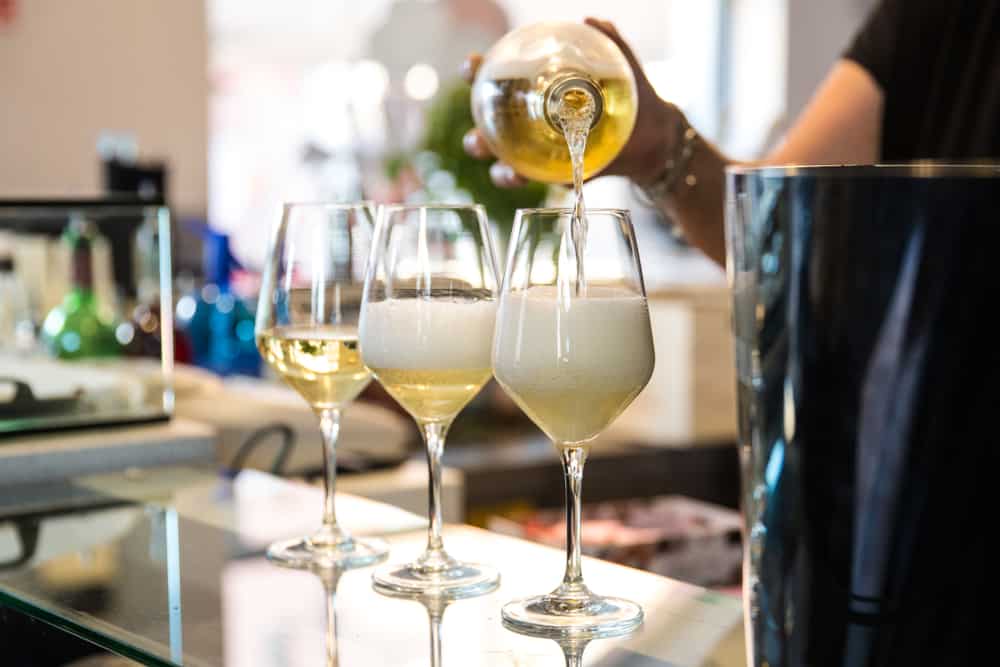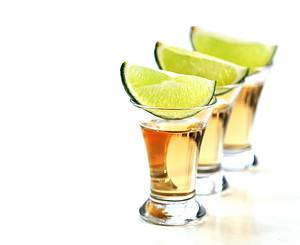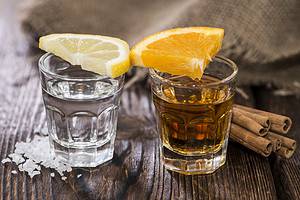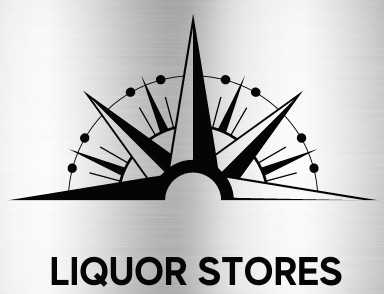Although it is an incredibly popular alcoholic beverage, Prosecco is somewhat misunderstood. Is it merely a budget-friendly alternative to champagne, or is there more to Prosecco?
To help you learn everything you need to know about Prosecco, we will explain what it is, where it comes from, and how it differs from Champagne and other bubbly wines. Once we have gone over the Prosecco basics, we will answer more in-depth questions about its flavor profile, alcohol content, how you should serve and enjoy a glass of Prosecco, and much more!
If you have ever wanted to know more about this widely enjoyed beverage, you have come to the right place!
Table of Contents
So, What Is Prosecco?
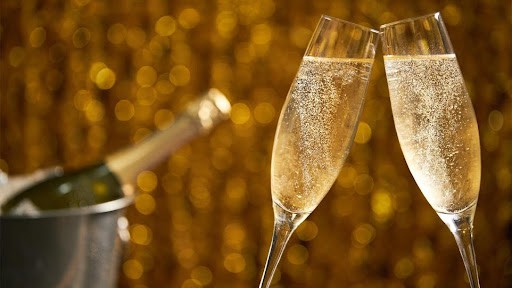
In simple terms, Prosecco is a type of sparkling white wine that originates from the northern regions of Italy. The name is taken from the Italian town of Prosecco, located on Trieste’s outskirts.
While it is possible to find varieties of Prosecco wine that are flat, meaning they do not fizz or bubble the same way a typical bottle will, these are relatively uncommon and are rarely found outside of Italy. These varieties are known as Tranquilo Prosecco, but you are very unlikely to come across a bottle unless you look for one in certain European specialty shops.
Given that Prosecco is a type of wine, it is made from fermented grapes. However, what differentiates Prosecco from other kinds of sparkling wines is that this Italian sparkling wine is made almost exclusively from the glera variety of grapes in the Veneto region of Northern Italy.
Where Is Prosecco Made?
As mentioned, Prosecco is made in Northeastern Italy. As we will explain in greater detail, where the grapes are grown and where the wine is made is incredibly important. Just like Scotch must be made in Scotland and Champagne must be made in France, Prosecco must be made in Italy to be considered Prosecco.
For more information about Prosecco, what makes a Prosecco grape, and for the opportunity to book tours of the region where it is made, consider exploring the Visit Prosecco Italy website – www.VisitProseccoItaly.com.
What Kind of Wine Is It?
As mentioned, Prosecco is a type of sparkling white wine. It is made from glera grapes, also known simply as “Prosecco grapes,” thanks to their close association with the wine.
To be true Prosecco, the wine must also use the Charmat Sparkling Method, which involves harvesting the grapes at a specific level of ripeness, then soft-pressing them. This white sparkling wine also requires a double fermentation process requiring sturdy, stainless-steel tanks, as the fermentation process produces significant pressure levels. This pressure is what gives Prosecco its characteristic bubbles.
What Is Prosecco Made of?
Aside from the juice of soft-pressed glera grapes, which is the most important ingredient, Prosecco also contains sugar and yeast. This is required for the fermentation process. However, most of it is filtered out before the Prosecco is bottled under pressure.
So, Is Prosecco Champagne?
No, Prosecco is not Champagne. Many people mistakenly believe that Prosecco is simply an affordable variety of Champagne. However, they are two separate beverages. Even though they are both bubbly and somewhat similar in appearance, taste, aroma, and even packaging, Prosecco and Champagne are not the same.
The main practical difference between the two is that they are made from different types of grapes. Where Prosecco is strictly made from glera grapes, Champagne is made from a mixture of pinot noir grapes and chardonnay grapes.
Prosecco and Champagne are also made using different methods. Champagne uses older, more traditional winemaking techniques. Prosecco producers have moved with the times and incorporated more modern technologies and materials, like stainless-steel fermentation tanks and automated bottling and capping machines. This is actually part of the reason why Proseccos tend to be more affordable than Champagnes.
The different techniques also result in another major difference between the two types of sparkling wine – Champagne is bottled at higher pressures than Prosecco, so it tends to be far more bubbly. This also explains why Champagne corks have a more dramatic release than the corks used to seal Prosecco.
Finally, and perhaps most importantly, where the two beverages are made is another significant difference. Both Prosecco and Champagne are protected according to the region they are made. In simple terms, Prosecco must come from Italy, while Champagne can only be called Champagne if it comes from the Champagne region of France.
These are legally protected designations, so any real Prosecco you drink will have been imported from Italy, just like any Champagne will have been imported from France!
Types of Prosecco
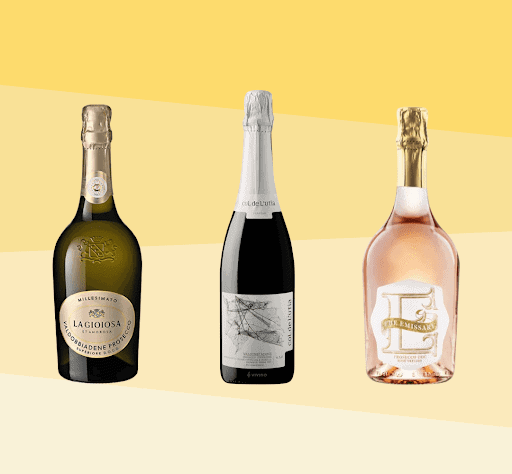
Essentially, there are three main types of Prosecco: sparkling, known as Spumante, semi-sparkling, called Frizzante, and a still version, Tranquilo.
As mentioned above, Prosecco Spumante is the most common. If you order a glass of Prosecco, you can almost guarantee that this is what you will receive unless you specifically ask for one of the other types.
Since the sparkling version of Prosecco is the most common, you can purchase different varieties. Brut Prosecco contains roughly 12 grams of sugar per liter, while Dry Prosecco and Extra-Dry Prosecco contain more sugar (usually between 13 grams and 32 grams per liter).
You can also select the specific area where the Prosecco has been made, which can alter the flavor due to different soil conditions, altitudes, and more.
Brands of Prosecco
While many Champagne brands are household names thanks to their iconic roles in popular culture, some famous Prosecco brands are also.
Some of the most well-known brands include the following:
- La Marca
- Distilleria Bottega
- Mionetto
- Ruffino
- Avissi
- Da Luca
- Sensi
While these are some of the brands you are most likely to come across, plenty of brands offer delicious and uniquely flavored Proseccos, so it is never a bad thing to get adventurous and try out different brands.
What Does Prosecco Taste Like?
Prosecco tends to have a sweet, almost fruity flavor. The extra dry varieties of Prosecco tend to have an almost citrus-like flavor, while the brut Proseccos taste more like apples, pears, peaches, and other fruits.
Compared to Champagne and other sparkling wines, Prosecco has a relatively simple and clean flavor. This is actually part of the reason why Prosecco is favored for cocktails that call for sparkling wine, like the mimosa, Aperol Spritz, or Pink Gin 75.
What Does It Smell Like?
The first thing most people notice when they smell Prosecco is its floral aroma. Naturally, it also has a sweet, fruity scent, thanks to the grape juice from which it is derived.
How Much Alcohol Is in Prosecco?
While the exact alcohol content of Prosecco will vary from one variety and brand to the next, most tend to sit at around 12% ABV. This is typical for sparkling wine, so most Proseccos will have roughly the same strength as a bottle of Champagne or Cava.
While 12% ABV is considered the average for Prosecco, it can range from 10% to 13% ABV, so it is important to check the label if you watch how much alcohol you consume.
How Many Calories Are There in Prosecco?
Those who are carefully counting their calorie intake will be relieved to learn that this sparkling wine is actually known to be one of the less calorically dense drinks.
One serving of Prosecco, a 4 oz glass, will contain between 80 and 90 calories. While the exact amount depends on the brand and variety, it is a safe bet that the Prosecco you are drinking will have a calorie count somewhere in that range.
For comparison, an average glass of wine has roughly 50 calories more per serving, so it is an excellent option for those watching their figure!
How Many Carbs Are There in Prosecco?
The carb content depends on the sweetness of the particular brand and variety you are consuming. Brut varieties of Prosecco contain very few carbs, with many containing 0 grams! For the lowest carb content, opt for Extra Brut Prosecco, as most brands are entirely carb-free.
For the sweeter varieties, most have one gram of carbs per serving, so they are still relatively low in carbs compared to other alcoholic beverages.
How Much Sugar Does It Have?
Again, the amount of sugar in the Prosecco you drink will depend on the variety and brand. As you would expect, the sweeter varieties have higher sugar content, so you should avoid them if you monitor your sugar intake.
That said, a standard 4 oz serving will hold roughly 1.5 grams of sugar, which is not very much compared to other types of wine.
How to Serve Prosecco

Prosecco, like other types of sparkling wine, should be served chilled. Ideally, it will be cooled to a temperature between 38° and 45° F (3° to 7°C).
While it is often served in a flute-style glass, some prefer to drink Prosecco from a standard white wine glass, as the wider mouth helps you appreciate the aroma. That said, flute-style glasses are better at preserving the bubbles in the Prosecco, so they are often preferred for larger gatherings where the Prosecco will be toasted and enjoyed as more of a celebration.
How to Open Prosecco
When opening Prosecco, it is important to place a clean towel or napkin over the cork. Carefully remove the foil, either by using the built-in tab or by using a wine key.
Once the foil has been removed, loosen the cork cage by twisting the tab. After five or six twists, the cage should be loose enough that it could fall off on its own. From here, you can position the bottle at a 45° angle that points away from you and anyone nearby.
While still covered by your towel or napkin, place your hand firmly over the cork. With your other hand, twist the bottle rather than twisting the cork. Do so slowly, and you should start to feel the cork slide forward. By opening the Prosecco bottle this way, you will have a much more controlled opening experience rather than forcing the cork out.
This method is safer and will help prevent Prosecco from foaming and spraying from the bottle, which means there will be more left for you to enjoy and serve.
How to Drink Prosecco
Prosecco can be a light and enjoyable beverage on its own. As mentioned above, you should use a standard white wine glass rather than a flute if you want to enjoy the flavors and aromas of Prosecco to its full potential.
Always pour it slowly from the bottle into an angled glass. Once you have given the Prosecco a few seconds to settle in your glass, you can smell the aromas, take a small sip and enjoy the fruity, sweet, and floral flavors!
Where to Buy Prosecco
Prosecco is widely available, meaning most liquor stores will carry at least a few different types of Prosecco. You can use our Liquor Store Finder to locate a retailer near you!
Typical Cost of Prosecco
Prosecco tends to range from just over $10 to $40. However, you can usually find a good bottle for about $16.
Compared to Champagne, Prosecco is incredibly affordable, which partially explains why it is considered a more versatile beverage. Not only is it often used for mimosas and other mixed drinks, but it is also used for celebrations with larger groups. This explains why it is often served at weddings.
On the other hand, Champagne’s far higher price means that most people reserve it for unique and intimate occasions.
How Long Does Prosecco Last?
The shelf life for an unopened bottle of Prosecco is three years. However, the lifespan will be much shorter if it is not stored in the correct conditions. Once the bottle is opened, it can go flat quickly. If it is properly sealed and placed inside a refrigerator, you might be able to extend its lifespan up to three days.
How to Store
Prosecco should be stored in an upright position. You should also keep it in a cool and dark location where the temperature will remain stable between 50° F to 60°F (10° to 15° C). Stable temperatures are best, so avoid leaving it near a heating or air conditioning vent.
You should also keep it from any direct light source, as light can negatively affect the flavor.

